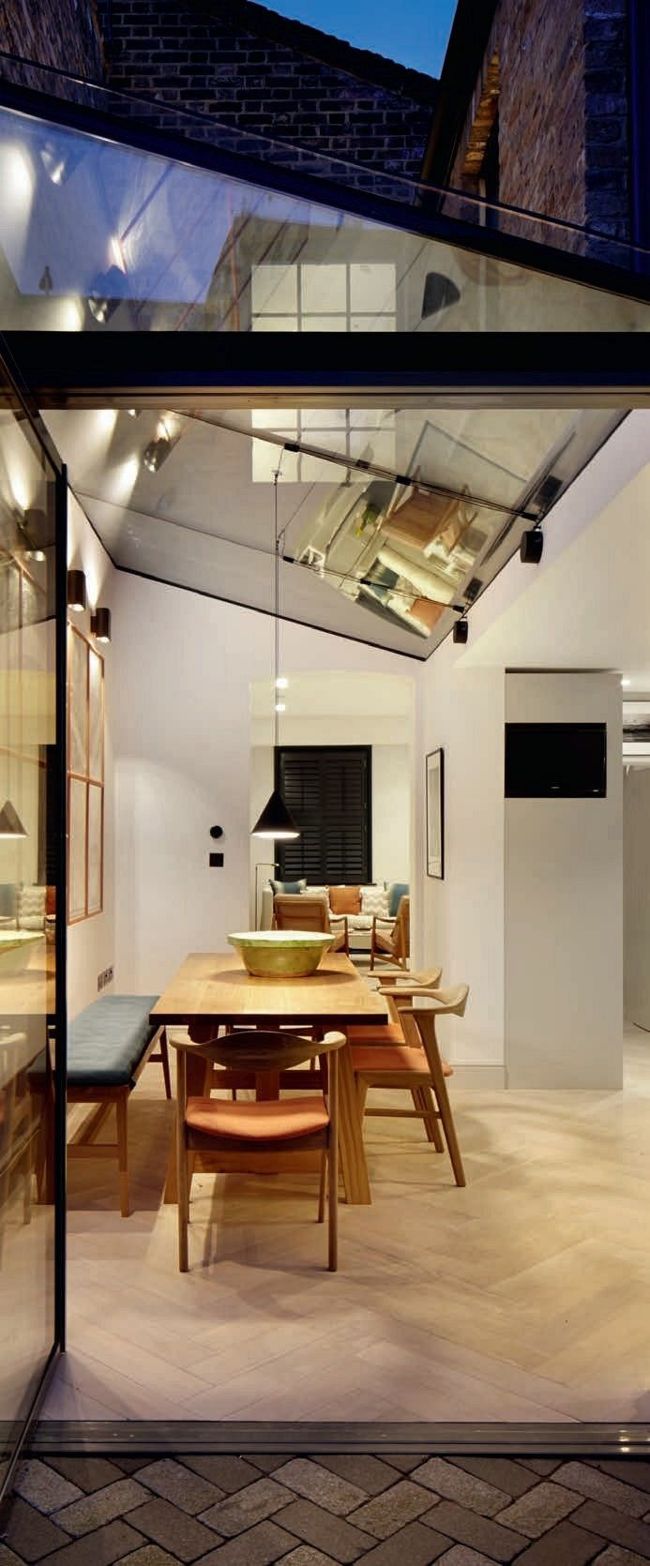10 KEY LIGHTING CONSIDERATION
The lighting scheme that you choose can transform a design from good to glorious. Find inspiration in Opinder Liddar’s illuminating ideas for your project

With the extension being predominantly glazed, it was difficult to fit any lighting in the dining room area of this London terrace house. Architect Lizzie Webster from Fraher Architects installed pendant lights running off a wall power point and created a sucker holder which connected to the glazed ceiling to then allow the pendants to hang above the dining table. The 20m2 extension cost around £50,000 in total
JACK HOBHOUSE
Responding to your design brief
You need a good understanding of what each of the spaces within your home is going to be used for. With this in mind, you can then set the tone of lighting for your home according to each room’s needs. If done well, both natural and artificial lighting will accentuate the best features of your abode. They can even improve mood and lifestyle.
When we, at Lapd Architects, design a new house or extension, we create a model of the abode in virtual 3D so that our clients can see exactly where the sun is going to be shining at different times of the day in the spaces that are being created. We then judge the right amount of glazing for that zone. Once we’ve correctly established the building design and internal brightness levels, we are in a better position to determine the right amount of artificial lighting to suit a client’s use of the space.
As a rule, I always look to achieve strong levels of luminance in living and entertaining areas by using high wattage output lighting, with most of the direct illumination coming from the ceiling. In spaces where clients want peace, such as in the study and bedrooms, subtle lighting is required. In these cases, it often makes sense to use indirect reflected sources, such as wall lights and uplighters or well-placed task lamps.
Technology exists today to enable you to control all of your lighting from touchscreens. You can even use voice commands with systems like Amazon Alexa to control all the artificial illumination in your house. I remain a fan of using traditional switches though, as this still enables you to create moods and, in the event of an IT meltdown, you’ll be able to see each other at night time.